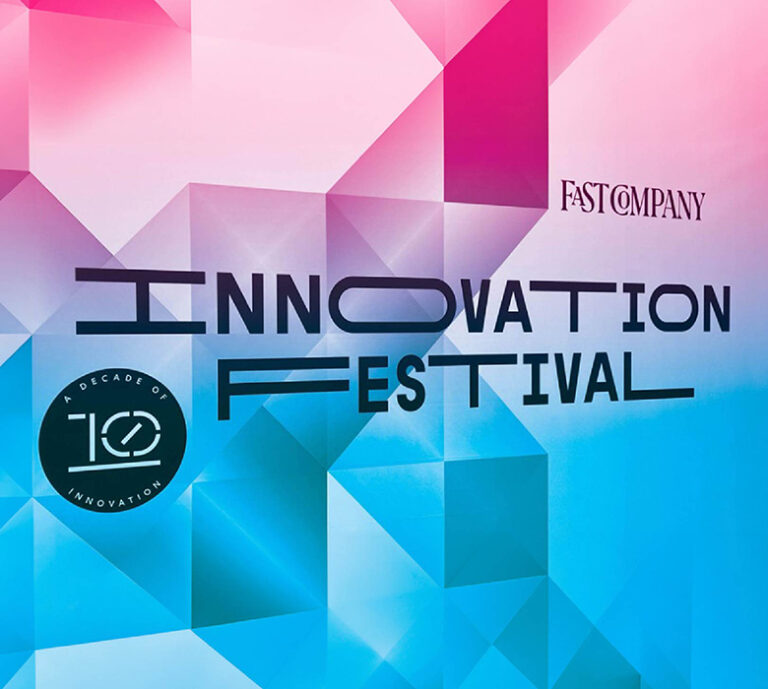×

Our Executive Director of Architecture, Glen Middleton, shares how brands should be approaching sustainable retail design.

In Chain Store Age, we continue to address how stores can work harder in today’s landscape. We highlight tools and approaches that can allow retailers to see threats as opportunities for positive change.
Most species are hardwired to react to threats with three familiar strategies- fight, flight, or freeze. Retail leaders facing a threat have essentially the same three strategic choices, with the additional risk of not being aware that a threat even exists. Compounding the leadership challenge is that in today’s Zero Horizon World, wisdom and experience have lost much of their potency since the threats that do come into view have few or no precedents. But are fighting, fleeing, and freezing in place the only options? Short of magic, yes. However, there are tools and approaches today that can allow you to see threats as opportunities for positive change. You can fight smarter, harden your defenses, and even prepare for threats before they happen.
When it comes to threats, avoidance isn’t an option. Tools and intelligence (maybe not in that order) give us an advantage, and we would be foolish to not use them. At ChangeUp, we believe that when you are smart, and know what tools are available, the best way to face threats can be fight, flight, AND freeze. These strategies are not mutually exclusive, but in essence are habits and mindsets of winning brands. How each of these three strategies come to life in the store experience is what matters the most. When done effectively, through store planning, merchandising, retail design, and communications, they have the power to create an experience customers will want to repeat.
Being able to separate fact from fiction has never been more important. We all need to make sense out of what we see around us, and that holds true for business, so we are prone to create convenient fictions to explain trends and anomalies. Misreading situations and misinterpreting data can lead to wasted time and resources. It is critical to ask deeper questions and seek a better understanding of the true cause of changing business metrics. Everything changing can’t automatically be attributed to COVID or the uniqueness of Gen Z. While social and demographic changes are truly transformational, these factors need to be understood at a deeper level and addressed with real strategies versus resigning to fate or un-informed hypotheses.
Now is the time to re-evaluate all your brand and experiential KPIs (and create experiential KPIs if you don’t have them). Reassess the landscape, update segmentations and target personas, rethink the competitive set, and scrutinize all the old assumptions. Determine the what and how, improving the ways of measuring and monitoring what matters. Be prepared for some new revelations that may at least adjust your tactics, and at most, force the rethinking of your entire business model.
Escaping a threat can be a wise move, as it can save you from guaranteed injury. Yet avoiding it is a means of maintaining the status quo, not growth. The better move is to retreat, regroup, and face the threat again from a position of strength. When a threat emerges, pause, and take the time to do things right. Timelines are often extended and scopes evolve because businesses prioritize speed over quality. Making an annual meeting, convention, or other seasonal or organizationally dictated moment, the goal line can lead to quick decisions that impact the future well after the event is forgotten.
Speed is a great asset but only when there is a desirable destination. Today that destination can change abruptly or disappear altogether. A buzz over a big new trend report or a competitor’s move is no indication that they are right. Take the time to do your homework and form your own picture of the future based on insights and analysis. You may, in turn, become the victor not the victim.
Make it difficult for threats to do you harm. Fortify what makes your brand a distinct and exciting experience to make it more durable and resilient, giving you more time to identify and act on suddenly changing market forces. Relationships with brands are always evolving. New generations of consumers may need to be convinced of your relevance or swooned away from emerging competitors to regain turf that was once deemed safe territory. Retailers should engage with consumers to look for weaknesses, latent strengths, and untapped potential. Evaluate “what is”, explore “what if”, and model “what could be”.
A strong brand, meaning one that evokes strong positive emotion and relevance, are the shells and quills that can protect future sales and growth. That said, strengths can become weaknesses if new entrants reframe the problem you solve, or competitors out-maneuver you with products, services, or more commonly, a superior experience.
There will always be sudden, unpredictable threats, but having the resources and commitment to always be looking ahead is good business. The best brands and most savvy retailers always look at what’s coming so that they can be proactive versus reactive to change.
Unfortunately, there is no radar that can detect oncoming threats, but there are ways to develop early warning systems that can discriminate short-term showers from major storms. At ChangeUp, we look at what’s next for our clients’ business through a simple but extensive process. We separate the effort into learning what is known, informing what is knowable, and exploring what is unknowable by creating and testing potential scenarios. Repeating this process regularly ensures that emerging threats and challenges are exposed, but also propels innovation to self-disrupt your business.
For retailers, threats are less vivid but just as existential, and may add the possibility of self-inflicted wounds and self-delusion. The integrated physical-digital retail realities of today could not have been seen coming a generation ago, and many once-familiar retailers and restaurant chains have gone extinct. Threats exist, change is unstoppable, but paying attention and being able to intelligently pivot are the keys to not just surviving but thriving.


